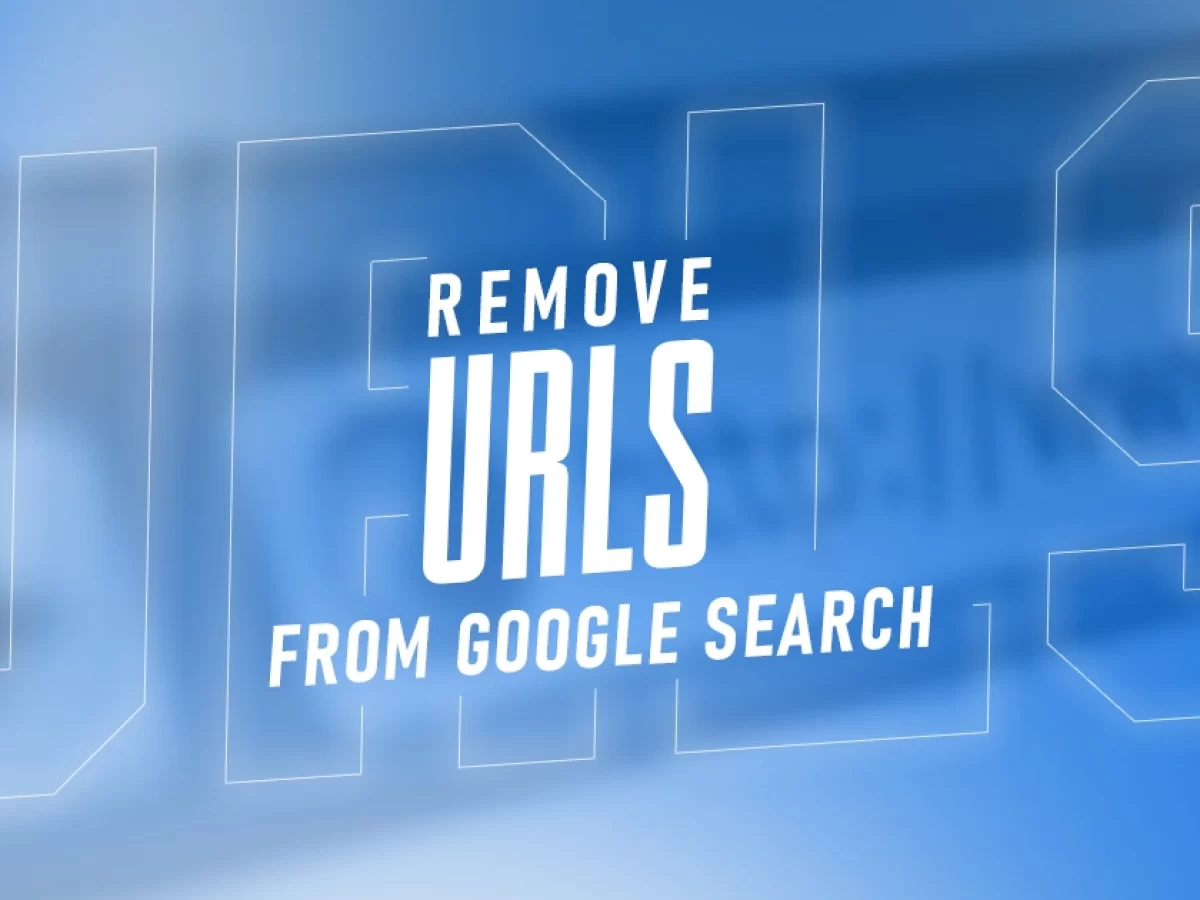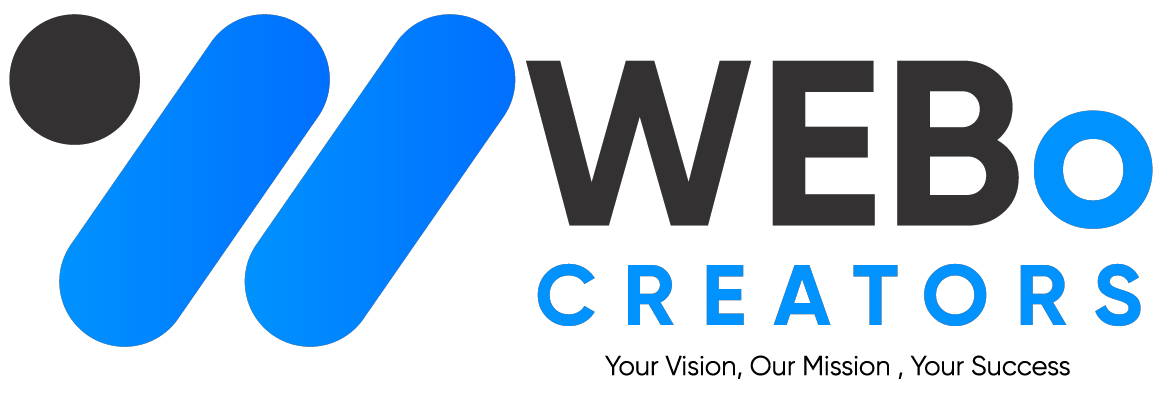How to Remove Any Site URLs from Google Search Quickly

There are moments when a specific webpage or file becomes outdated, irrelevant, or sensitive, and you no longer want it to appear in Google Search results. Whether it's old content, duplicate pages, or confidential data, removing these URLs is important for protecting your brand reputation and digital presence. At Webo Creators, we help individuals and businesses clean their online footprint professionally. This blog will guide you step-by-step on how to permanently remove any URL from Google Search in a safe and effective way.
Understanding How URLs Appear on Google
Google's search engine bots continuously crawl the internet and store information about web pages in its index. Any page that is accessible publicly and isn't blocked will likely be indexed and appear in Google Search. This includes live website pages, documents like PDFs, and even outdated or deleted content that still exists on Google's servers. Understanding how URLs are indexed is the first step in knowing how to get them removed properly.
Using Google Search Console to Request URL Removal
The Google Search Console offers a direct tool for requesting the removal of specific URLs from appearing in search results. Although this tool hides the page from search results temporarily for about six months, it gives immediate relief from unwanted exposure. You can access this feature by logging into Google Search Console, selecting your property, and submitting a new removal request for the specific URL. This method is ideal for urgent situations but should be combined with other actions to make the removal permanent.
Applying the Noindex Meta Tag for Long-Term Removal
One of the most reliable ways to tell Google not to index a page is by adding a noindex meta tag to the header section of that page. When Google's crawlers detect this tag, they will remove the page from search results during their next crawl. This is a long-term solution because it tells the search engine directly that the content should not be included in search listings anymore. It’s essential that the page remains accessible so Google can detect the tag and act accordingly.
Using X-Robots-Tag for Non-HTML File Types
In situations where you want to prevent indexing of non-HTML files such as PDF documents or image files, the X-Robots-Tag HTTP header is a powerful tool. By setting this header on the server side, you can tell search engines not to index specific file types. This is especially useful when dealing with downloadable files that are still being discovered in search results, despite being outdated or private in nature.
Blocking Crawling with Robots.txt File
The robots.txt file located in your website’s root directory is a set of instructions for search engine bots, telling them which pages or paths they are not allowed to crawl. While using robots.txt can stop search engines from accessing certain pages, it doesn’t guarantee that the content won’t appear in results if it’s already been indexed or linked from other sites. Therefore, it’s recommended to use it alongside other removal methods like noindex tags for complete effectiveness.
Using HTTP 404 and 410 Status Codes
Another method to remove a page from Google’s search results is by configuring your server to return a 404 (Not Found) or 410 (Gone) status code. A 404 code tells search engines the page no longer exists, while a 410 code is even stronger, indicating the page is permanently removed. Both help signal Google to drop the URL from its index during future crawls. This is a common and effective method used after content is deleted from a website.
Deleting the Page or File Permanently
The most straightforward approach is to completely delete the page or file from your website so that it no longer exists at the given URL. Over time, Google will realize the page cannot be found and will remove it from its search index. This natural process can take a few days to weeks, depending on how often Google crawls your site. You can speed up this process by also submitting the deleted URL to Search Console for removal.
Maintaining Your Site After URL Removals
Once you've successfully removed a URL, it’s crucial to ensure your website remains optimized and clean. You should remove any internal links that still point to the deleted page, as they can confuse users and signal to Google that the page still matters. Also, keep your XML sitemaps updated to reflect only live and relevant content. Regular website audits help ensure that old, broken, or irrelevant URLs are no longer harming your SEO or user experience.
Avoiding Common Mistakes During URL Removal
Many website owners mistakenly believe that blocking a page with robots.txt or simply removing content is enough to make it disappear from Google. However, if the page was already indexed, these actions alone may not work. It’s important to use a multi-step approach involving the correct tags, server responses, and Search Console requests. Also, never forget to monitor progress and check whether the removed content is still accessible or cached.
Conclusion
Permanently removing a URL from Google Search requires careful planning and the correct use of tools and settings. Whether you’re protecting personal data, removing old content, or simply improving SEO, these removal strategies help you manage your web presence more effectively. At Webo Creators, we provide expert guidance and services to ensure your online visibility reflects your brand’s best image. If you need help with advanced removal strategies or website SEO cleanup, our team is ready to support you every step of the way.
FAQs
1. How long does Google take to remove a URL after a request?
Google can remove a URL temporarily almost instantly using Search Console, but permanent removal depends on recrawling, which usually takes a few days to weeks.
2. Can I remove URLs from websites I don’t own?
If the content violates privacy or Google’s policies, you can submit a removal request using the Remove Outdated Content tool provided by Google.
3. What’s better: noindex tag or deleting the page?
Deleting the page is best for permanent removal. A noindex tag works well if the content still exists but shouldn’t appear in search results.
4. Will using robots.txt alone remove a page from search results?
No, robots.txt only blocks crawling. It does not remove already indexed content unless combined with other methods.
5. Is a 410 status code more effective than 404?
Yes, a 410 Gone status more clearly tells Google the content is permanently removed, which can result in faster deindexing.
6. How do I prevent private files like PDFs from showing in search?
Use the X-Robots-Tag header set to "noindex" on your server for non-HTML content like PDFs or images.
7. Should I remove broken links pointing to deleted URLs?
Yes, broken internal or external links should be updated or removed to avoid confusing users and search engines.
8. Can I remove a cached version of a page on Google?
Yes, you can request Google to remove the cached version using Search Console or the Remove Outdated Content tool.
9. What happens if I re-upload the deleted page later?
If the URL becomes active again and isn't blocked, Google may re-index it in future crawls.
10. How can I monitor which pages are indexed by Google?
Use the Index Coverage report inside Google Search Console to see which URLs are included in Google’s index.
11. Does removing URLs help with SEO?
Yes, it prevents outdated or irrelevant content from affecting your website’s rankings and user experience.
12. Can Webo Creators help me remove multiple URLs at once?
Absolutely. At Webo Creators, we offer bulk URL removal services and full SEO audits to keep your website clean and optimized.
